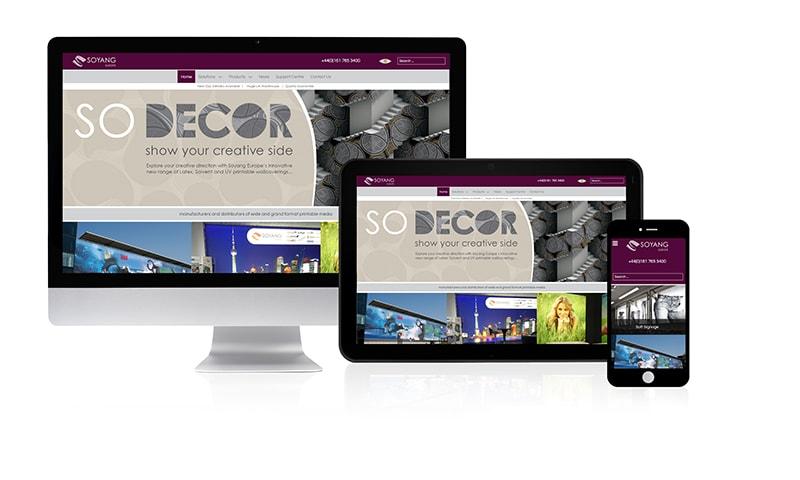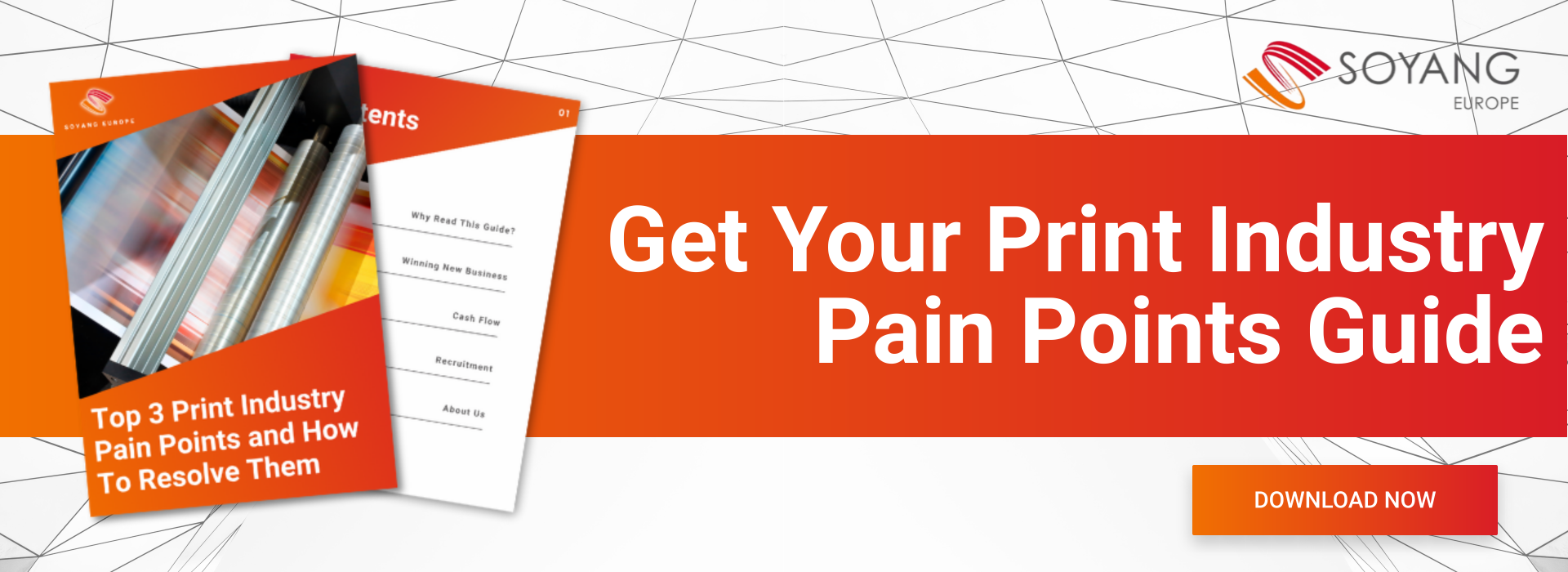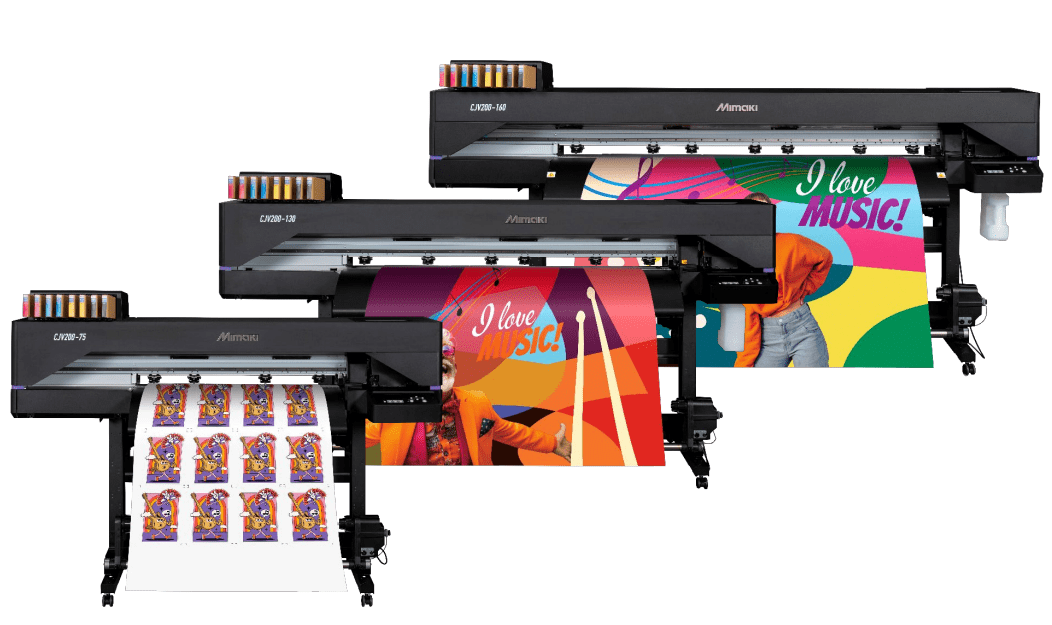Thanks to the brilliant imagery it creates, the print industry and social media have long been natural bedfellows. But what’s the best way for your print business to use social media? Here’s the Soyang guide.
Whenever there’s a conversation about print shop marketing, you can bet the mention of social media won’t be far behind. But while it’s easy to say, ‘you need to be more active on social media’, there are a few steps you need to take before you wade in and start posting ‘stuff’ on Instagram.
Why Is It Important For Printers To Have A Social Media Strategy?
Because the possibilities when it comes to social media for print businesses are huge and there are only so many hours in the day. Your business is printing, not posting on social media, so it’s important that you achieve the biggest bang for your social media buck (and time). That means making sure you’re targeting the right people on the right platforms at the right time with the right content.
How to Create A Social Media Strategy for Printers
Your strategy should be built on the following:
Audience
Who are you aiming to connect with on social media – is it the general public, small business owners, big corporates? Having established that, you then need to work out what you know about them in a print context. What might they want from you? What are their pain points? How could your print business’ use of social media help address those pain points or meet those needs?
Platform
What social media does your target audience use? If they’re all on Instagram and Facebook, you’d be wasting effort in focusing your attention on X and TikTok. Understanding the right platform for your social activity can remove a lot of wasted effort.
Time & Frequency
This can take some trial and error, and you might need to look at what competitor printers are doing, but if you can identify the windows when your target audience is most engaged on social media, you’ll likely achieve better engagement with your posts.
You’ll also want to test frequency to reach the ideal number of posts per day. Try posting more posts on some days and fewer on others and monitor the effect. Habits change, though, so this is one you’ll need to keep revisiting.
Goals
What’s the point of social media for printers? What’s the ambition? It might be raising general brand awareness. It could be driving traffic to your website. It could be lead generation. It could be sales.
Ultimately, all the above have sales as their end goal, but some of them take a longer-term approach, helping your print shop grow a following based on building your voice within the industry. Others cut to the chase and focus on deals of the day/month/week, which may not do too much to build engagement and loyalty but could be a powerful way of delivering the occasional sales push.
You can mix goals, but it’s important to always know which goals a post is aiming at.
Content
Social media for print businesses relies on content, but what content? We explore that further below.
Social Media Tactics for Print Businesses
Your strategy may help you target your social media, but you’ll still need something to say. Here are some options for applying social media in your print business.
1. Image showcase
Why use this? Because print is a largely visual medium and showcasing your ability to create fantastic visuals gives you the triple whammy of creating a particularly eye-catching social media feed and offering lots of inspiration, while also demonstrating your capability.
Great for: Brand awareness, lead generation and, potentially, sales generation if the image you’re displaying relates to a specific product.
2. How to…
Why use this? A common print industry social media tactic is to use time lapse video to show how a product came together. Not only is it powerfully effective in terms of grabbing the attention, but it also educates and demonstrates your ability as a printer. If you don’t have the time or technical skills to do that, you could always write step-by-step guides.
Great for: Brand awareness and, when you add a ‘find out more’ link to your post and connect to more content on your website (e.g. a blog) it’s a great way to drive traffic there too.
3. Testimonials
Why use this? A little bit of humblebragging never went amiss. On the face of it, thanking someone for a great review or testimonial (perhaps over an image of their print material) is simply a nice thing to do. Beneath the surface, however, that post is a) showcasing the work itself, b) showing that other people love it, c) demonstrating that you’re a good person to work with.
Great for: Brand awareness and lead generation.
4. Case studies
Why use this? A great way of connecting with followers who at some point may find themselves saying ‘we need something like that’. A case study could sit on your website as a written piece (hopefully with lots of quality imagery) with your social posts pointing at it, or it could be a reel within your social media feed. Either way, it can be a powerful way of showing what you’re capable of.
Great for: Brand awareness, lead generation and driving traffic to your website.
5. People
People buy from people, as they say. So it’s worth taking the time to occasionally shine the spotlight on your team, so the social media for your print business has a human face.
Great for: Brand awareness.
6. Industry news
Why use this? Social media for a print business is usually most effective when it displays or links to your products, ideas, processes etc. But there can still be value in sharing industry news with your followers, especially when you can add your own opinion or expertise about the topic.
Great for: Brand awareness For printers, social media has the power to add rocket fuel to your business. When that happens and you need the print materials to help you respond to an uptick in orders, talk to us.










